by Christopher W. Holton
Since the September 11th, 2001 terrorist attacks in the United States, the federal government has gone to great lengths to keep weaponry of all sorts from finding its way on airliners.
The effectiveness of these measures is open to debate, but the idea has been to prevent items such as explosive devices fashioned in the form of contact lens saline solution bottles, shaving cream cans and the like from finding their way onto an airliner. The TSA is also supposed to be on the lookout for box cutters (and pocket knifes and fingernail files), as well as shoes loaded with explosives.
All of these measures have been reactive–in response to both successful and failed terrorist plots from the past. Such is the nature of our bureaucratic counter terror apparatus. The enemy watches what we do and dreams up more methods to exploit holes and vulnerabilities in the defensive security measures. And, of course, once the enemy tries a new method, successful or otherwise, the TSA modifies its policies to defend against the last attack.
Americans of all philosophies are frustrated by what they perceive as onerous inconveniences and gross invasions of personal privacy.
But that is not the issue that should be of greatest concern to Americans. What should truly concern us all is that the measures that have locked down airliners tighter than a drum have created bottlenecks and choke points in airport terminals, leaving even larger numbers of travelers vulnerable to violent terrorist attack.
One attack on a single airliner has the potential to kill anywhere from dozens to a few hundred innocent passengers. But an attack on a busy airport terminal has the potential to kill several plane loads of innocent travelers before they get on the airplane.
Take a look at the accompanying photographs and the vulnerability is clear. A backpack bomb in a security line would be devastating and the security apparatus is exactly what caused the vulnerability.
To be fair, security lines are not the only vulnerability. Long lines at ticket counters produce huge crowds and bottlenecks as well:
What all this adds up to is an overall air travel industry that is still quite at risk.
Lest you think that I have pointed out a vulnerability that the Jihadists may not have thought of yet, rest assured that the Jihadists have already identified airports as targets for mass casualty attacks.
In fact, there have been two such attacks in recent years, one successful and one failed.
In January 2011, Islamikaze bombers attacked Domodedovo airport in Moscow, killing 35 and wounding 182. This incident is largely forgotten in the West. In fact, it received scant media attention beyond the day of the attack.
The fact that the attackers were believed to have been trained at an Al Qaeda camp in Pakistan should serve as a warning to America. If the Jihadis can train to attack Russian airports, they can train to attack American airports just as well.
The photographs below of the carnage serve as a stark contrast to the photos above showing travelers queuing up to get their tickets or go through security…Note that these photos were taken from camera phones soon after the bombing.
When one compares the photos from the security and ticket counter lines to the photos from Moscow, it is not difficult to grasp the magnitude of the vulnerability.
Moscow was not the only airport attack.
In 2007, two Moslem physicians attempted to blow up the terminal building at Glasgow International Airport in the UK with a VBIED (Vehicle Borne Improvised Explosive Device).
The two planned on driving a Jeep Cherokee through the front door and detonating a large bomb upon slamming through the entrance. Fortunately, their bomb fizzled, but the images below show just how close they came to achieving their evil objective. Given the results from other VBIED attacks in the past in places like Lebanon, Iraq, Kenya and Tanzania, it’s not hard to imagine the horrible effects of a successful attack on a crowded airport terminal.
There is an old saying that he who tries to defend everything defends nothing. What is the answer to these vulnerabilities? No doubt technology will play a prominent role in finding solutions, but we should also consider the fact that while the newly unionized TSA is confiscating nail clippers from soldiers returning from war, making mothers sample their own breast milk, frisking wheelchair-bound grandmothers and fondling genitalia, they are actually putting all travelers in real danger.

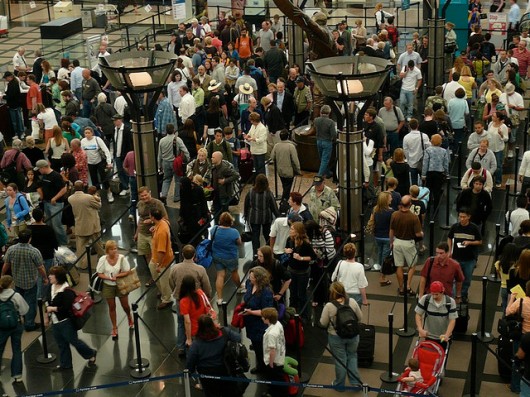

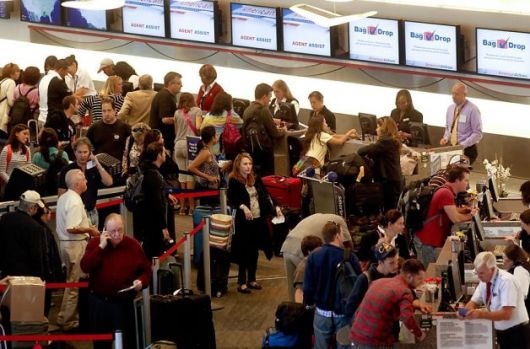
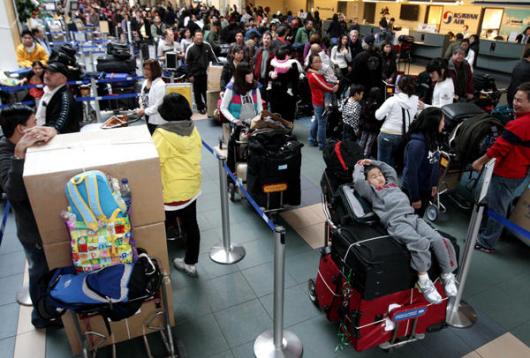








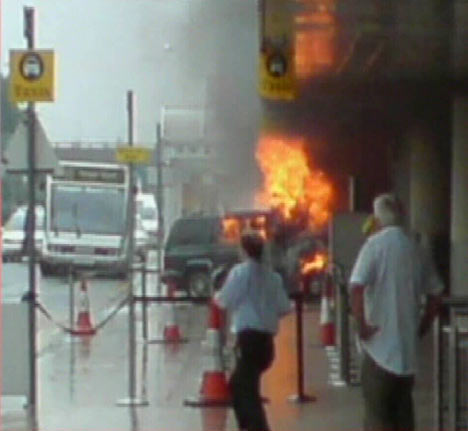

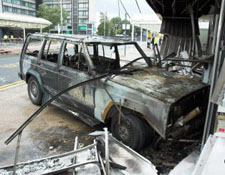
Comments
You may be interested in my blog:
“The V1-VR Terrorist Runway Kill Zone (RKZ)”
runwaykillzone.com/
“Why Air Force One, military and civilian aviation must be protected in the RKZ.”
“Rezwan Ferdaus could have attacked Obama’s Air Force One in a runway kill zone (RKZ) not unlike JFK’s Dealey Plaza”
There are many aspects of the JFK assassination in Dealey Plaza that remain in dispute to this day. But most analysts agree that when Kennedy’s Lincoln convertible slowed down nearly to a stop to make the 120 degree turn onto Elm Street in front of the Texas School Book Depository it was entering what should have been recognized by the Secret Service as a potential ”kill zone.”
Oswald (and others?) was able to take advantage of the Dealey Plaza kill zone because:
1.The route and time of the motorcade had been published in advance which allowed Oswald to pre-position himself for a kill shot.
2.The limousine had to nearly stop to make the turn onto Elm presenting a nearly stationary target for the Oswald.
3.Oswald had technology available to him, a sniper rifle on which he was sufficiently trained, that he could use to attack JFK in the plaza.
Now, nearly 50 years later, it is increasingly apparent that new advances in micro-UAV technology incorporating autonomous GPS autopilot control can enable aspiring assassins and terrorists, such as Rezwan Ferdaus, to have the ability to attack the president in a V1-VR Terrorist Runway Kill Zone (RKZ) with similarities to Dealy Plaza.
The RKZ is a zone on an airport takeoff runway between two points called V1 and VR that every large multi-engine jet aircraft, such as Air Force One, must pass through while taking off.
If any two engines on a large multi-engine jet can be disabled in the RKZ by a terrorist attack, the aircraft will not be able to gain enough altitude to return to the airport and will almost certainly crash. The availability of inexpensive, GPS-guided autonomous model aircraft and helicopters (drones and UAVs) that are capable of precisely targeting the runway path of each jet engine in the RKZ makes terrorist attacks increasingly probable.
LikeLike
Thanks. I have bookmarked it. Very interesting.
LikeLike
Thank you. After one year of the RKZ blog being up you are the first known bookmark! The Secret Service, FBI, Air Force, DHS and FAA have all be sent the contents of the blog, but there has been no public response or interest in addressing this potential vulnerability, at least in public. Maybe they think they don’t want to give terrorists any ideas. But as my blog lays out, every time a bird takes down an airliner platform (See AWACS Yukla-27) any terrorist with a brain will be tempted to reverse-engineer what happened.
LikeLike
Trackbacks
[…] https://terrortrendsbulletin.com/2012/11/13/airliner-security-leaves-travelers-more-vulnerable-in-air… […]
LikeLike